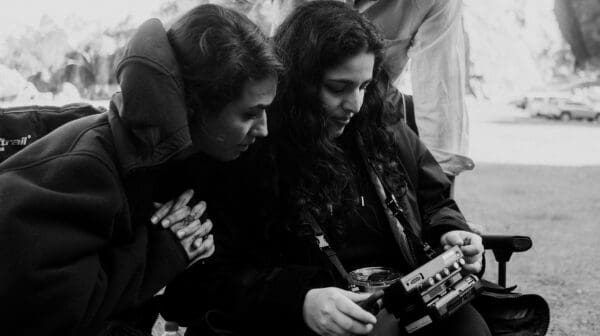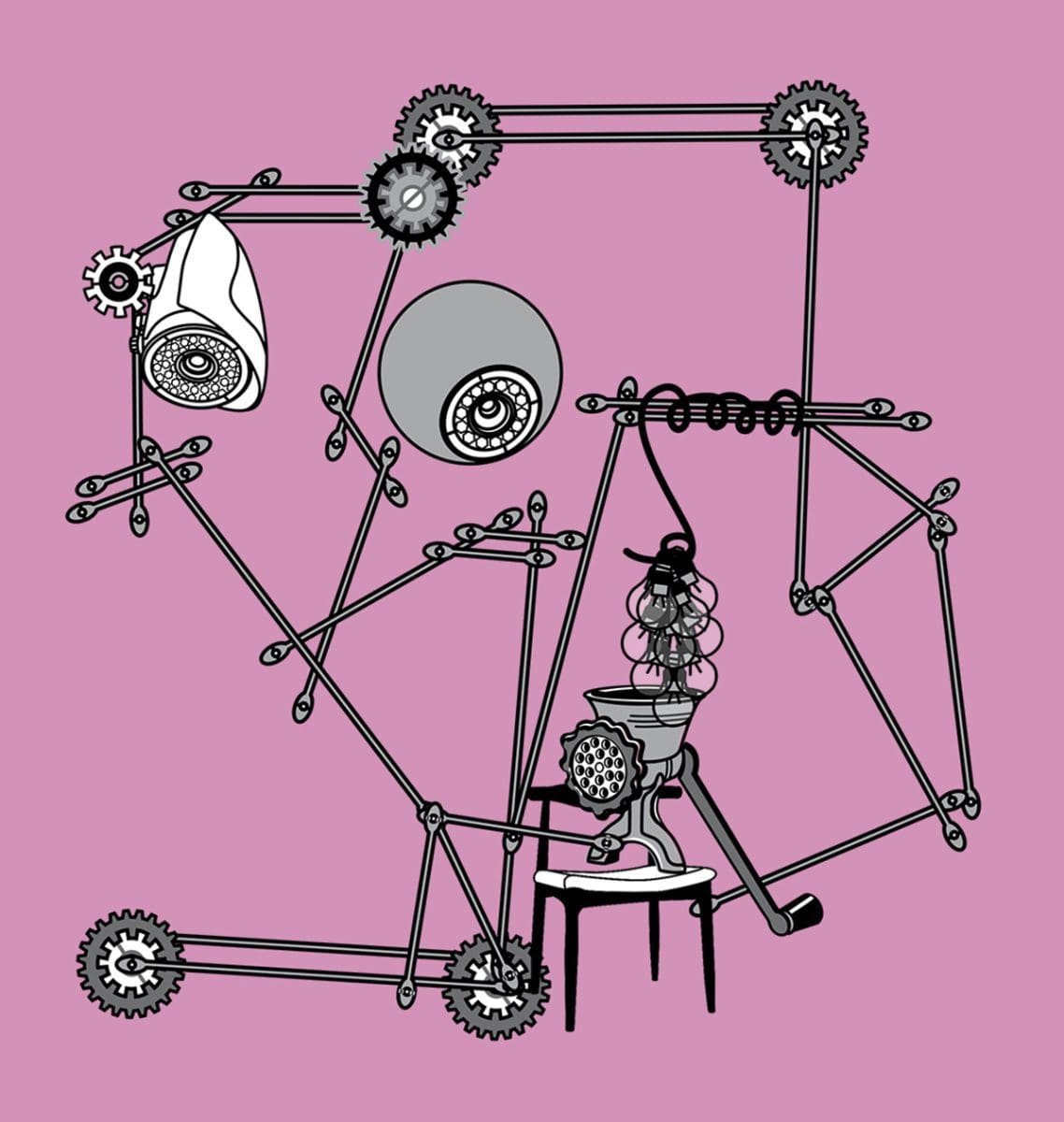
Finding New Spaces Together
‘Vádye Eshgh (The Valley of Love)’ is a collaboration between Second Generation Collective and Abdul-Rahman Abdullah weaving through themes of beauty, diversity and the rebuilding of identity.



Whether we are channel surfing, laughing at a meme or uploading a selfie to Instagram, we are consistently viewing, sharing and creating images. The strange cultural experience of continuously watching others, while also being watched, is the subject of Megan Keating and Samuel Johnstone’s latest exhibition, The Onlooker.
The artists consider everything from the ubiquity of the digital screen, the workings of surveillance technology, the rise of image-sharing platforms, and the ridiculousness of meme culture, to how the act of looking has changed with technological evolution.
At the centre of The Onlooker sits a minute-long looped animation that is surrounded by 14 cut-outs made of mirror and white-gold Perspex. The cut-outs represent the observational tools of our culture, including cameras, machinery and surveillance apparatus. With reflective surfaces situated throughout the space, visitors walking through The Onlooker will be continuously reflected, revealed and concealed.

Keating and Johnstone’s installation centres on the idea that a shared image is never a simple thing. “Where does an image lie?” asks Keating. “Who is the maker? Who is the audience? What happens when something is shared or edited or becomes a meme? What is the authority in terms of who owns what? What are the ethical and moral implications of that?” At the foundation of these questions is a source that is easily overlooked: light. The installation uses light as a metaphor for surveillance and online image culture. After all, it is light that allows us to reflect, observe, illuminate and capture images and ideas.
Despite the topical subjects they’re dealing with, Keating and Johnstone aren’t concerned with being serious or judgemental. Instead the artists revel in what Johnstone calls “the absurdity” of our image sharing culture. This is achieved by combining slapstick humour with the anxiety of being consistently reflected. Alongside a penchant for the absurd, Keating and Johnstone also consider the paradoxical aspects of image culture. As Johnstone explains, “These technologies have a fair degree of paranoia about them and yet these are also things that we’ve demanded of the world ourselves.”
And what are Keating and Johnstone hoping viewers will take away from The Onlooker? Johnstone quickly replies, “As a friend of mine suggested, the best possible outcome for the show is that people will take a bunch of selfies in the room.”
The Onlooker
Meg Keating and Samuel Johnstone
M16 Artspace
23 March – 9 April